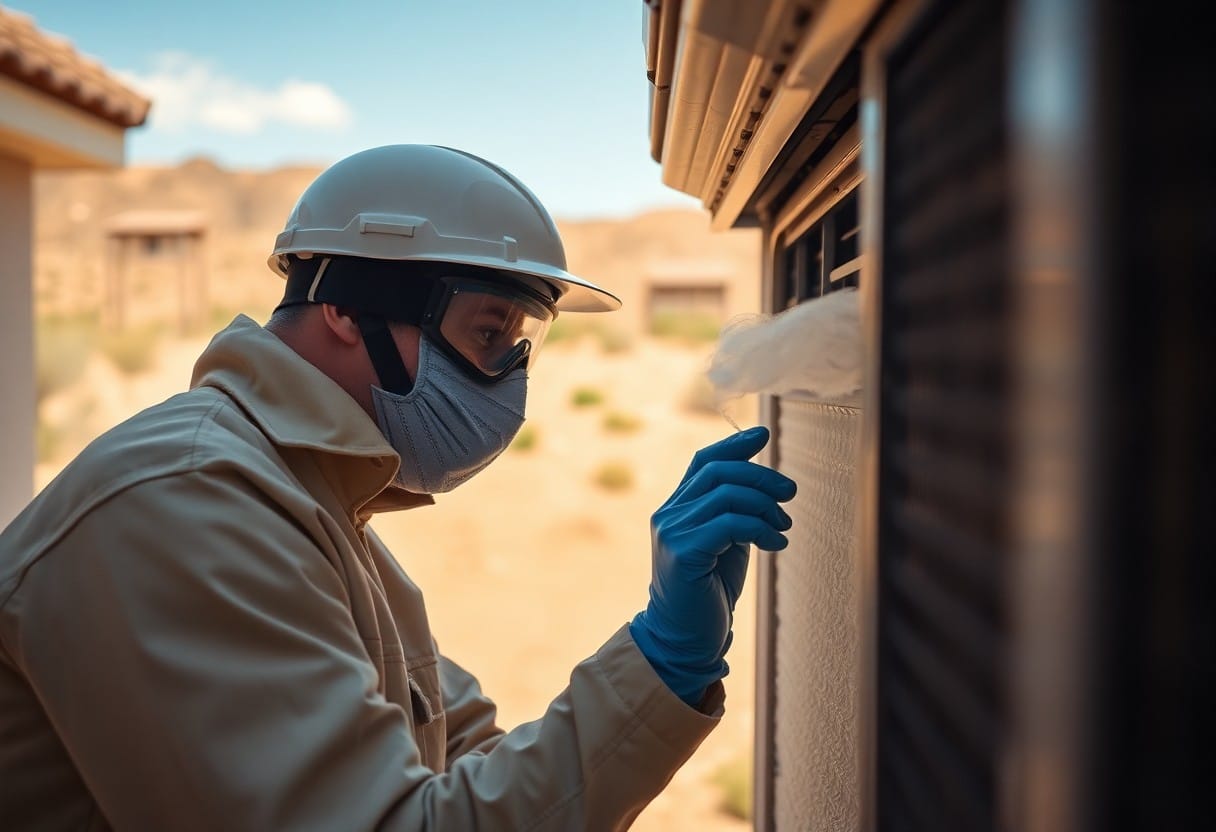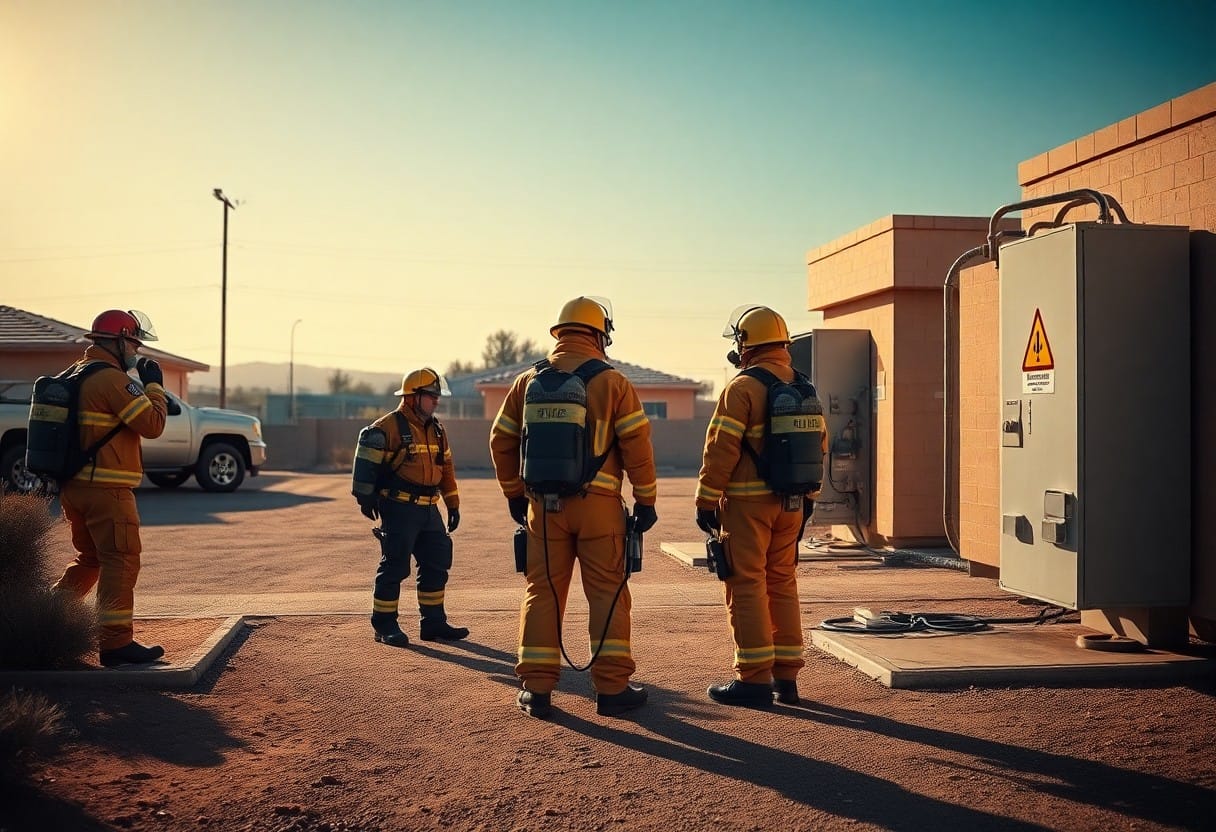Phoenix residents must be aware of the health risks associated with refrigerant leaks, particularly during warmer months when air conditioning systems are heavily utilized. Exposure to harmful refrigerants can lead to serious health issues, including respiratory problems, skin irritation, and long-term effects. If you suspect a refrigerant leak in your home, it’s imperative to act swiftly to protect yourself and your loved ones. Understanding the immediate steps to take can significantly minimize exposure and ensure your safety.

Understanding Refrigerants
Types of Refrigerants
Refrigerants are classified into several categories based on their chemical composition and properties. The most common types include CFCs (chlorofluorocarbons), HCFCs (hydrochlorofluorocarbons), HFCs (hydrofluorocarbons), and natural refrigerants such as ammonia and carbon dioxide. Each type has distinct characteristics that affect their environmental impact and efficiency in cooling systems. For instance, CFCs are known for their high ozone depletion potential, while HFCs generally have a lower impact but still contribute to climate change.
Selecting the right type of refrigerant for your air conditioning or refrigeration system can significantly influence operational efficiency and environmental compliance. Familiarizing yourself with these categories helps in troubleshooting leaks and making informed decisions about refrigerant management. CFCs, HCFCs, HFCs, natural refrigerants can all have varying safety profiles, making your awareness of their risks and benefits imperative. Assume that choosing an appropriate refrigerant may also affect regulatory adherence in your area.
| Type | Characteristics |
| CFCs | High ozone depletion potential, phased out globally |
| HCFCs | Transitional refrigerants, lower ozone impact but still harmful |
| HFCs | Low ozone depletion, high global warming potential |
| Natural Refrigerants | Environmentally friendly alternatives, such as ammonia and CO2 |
Properties and Uses
The effectiveness of refrigerants hinges on specific properties like boiling point, pressure, and thermal conductivity. These attributes determine how efficiently a refrigerant can absorb heat during the refrigeration cycle. For instance, ammonia has excellent thermal properties that make it suitable for large-scale industrial applications, while HFCs are more commonly used in residential and commercial air conditioning systems.
Understanding these properties not only informs your choice but also helps you tackle leaks effectively. Each refrigerant type presents unique handling requirements and safety concerns. Recognizing the boiling point, pressure, and environmental effects associated with your refrigerant is pivotal in ensuring safe usage and compliance with local regulations.
Health Risks Associated with Refrigerant Leaks
Immediate Symptoms
Exposure to refrigerants can lead to several immediate symptoms. If you detect a leak, you may experience dizziness, headaches, or irritation of the eyes, nose, and throat. Inhalation of refrigerants can cause asphyxiation, especially in confined spaces where oxygen levels may be displaced. Symptoms can escalate quickly, leading to unconsciousness in severe cases. These reactions warrant immediate evacuation from the area and seeking fresh air to alleviate symptoms.
Individuals with pre-existing respiratory conditions are particularly vulnerable. Chronic asthma or other conditions can be exacerbated by refrigerant exposure, triggering acute asthma attacks or other respiratory distress. Assessing the extent of the leak and identifying affected areas is imperative for your safety and that of others nearby.
Long-term Health Effects
Long-term exposure to refrigerants can lead to significant health complications. Continued inhalation may contribute to neurological problems, pulmonary issues, and even heart complications. For instance, exposure to certain types of refrigerants has been linked to a higher risk of developing conditions such as cardiomyopathy and arrhythmias. Moreover, refrigerants known as hydrofluorocarbons (HFCs) have been associated with possible reproductive and developmental effects, raising concerns about prolonged exposure in occupied environments.
Long-term exposure effects may not be immediately obvious. Symptoms can take years to manifest, often making it challenging to attribute them directly to a refrigerant leak. The risk increases in households or workplaces with chronic leaks, gradually affecting respiratory health, cognitive function, and overall well-being. Early detection and proper management of leaks are vital to prevent these latent health issues; immediate professional assistance can significantly mitigate risks associated with refrigerant leaks. For comprehensive guidance on navigable safety issues, check out Your Essential Guide to Handling Gas Leaks.
Emergency Response Procedures
Initial Actions to Take
Upon discovering a refrigerant leak, act swiftly to mitigate potential health risks. First, ensure that you and anyone nearby move to a safe, well-ventilated area to minimize exposure. Close any doors and windows in the immediate vicinity to contain the leak, but avoid using any electrical equipment that could spark an explosion. If symptoms like dizziness or difficulty breathing begin, seek fresh air immediately and have someone call for medical assistance.
Assess the situation to determine the severity of the leak. If you notice a strong odor or see visible gas, it’s important to refrain from attempting to fix the issue yourself. Leave the area and contact professionals who are trained in handling refrigerant leaks. The quick identification of the leak source, if safe to do so, can expedite help from emergency services.
Evacuation and Safety Measures
In the event of significant exposure or leak, evacuation is paramount. Ensure everyone leaves the premises without delay, prioritizing the most vulnerable individuals such as children and the elderly. Establish a safe meeting point away from the affected area where you can account for all individuals. Stay alert for symptoms of refrigerant exposure, including skin irritation or respiratory issues, and encourage everyone to report any discomfort to emergency responders.
Implement safety measures while waiting for technicians to arrive. If possible, provide emergency services with information regarding the refrigerant type and any symptoms experienced. This information will assist in determining the best course of action for containment and medical response.
Additionally, avoid re-entering the premises until cleared by professionals. Ensure that the area remains cordoned off to prevent accidental exposure or injury to bystanders. Keeping first aid kits accessible and communicating clearly with emergency responders will enhance the effectiveness of your safety measures during this critical time.

Reporting and Documenting the Leak
Regulatory Requirements
In Phoenix, as with the rest of the U.S., reporting a refrigerant leak is not just a best practice; it is mandated by law for certain scenarios. The Environmental Protection Agency (EPA) requires that any leak exceeding a specific threshold be reported immediately. Familiarize yourself with the Section 608 of the Clean Air Act, which outlines the necessary actions and reporting timelines for leaking refrigerants. Failing to adhere to these regulations can lead to significant fines and liability issues.
Additionally, local regulations may impose more stringent reporting requirements. Contact your local air quality management district to understand their specific obligations. Ensure your business complies with the State of Arizona’s emissions reporting standards to avoid penalties and keep your operations running smoothly.
Importance of Documentation
Thorough documentation of a refrigerant leak is necessary for both regulatory compliance and risk management. Record the time of detection, the volume of refrigerant leaked, and any actions taken immediately thereafter. This information serves as a formal record that may be required during audits or inspections, showcasing your adherence to legal obligations.
Furthermore, documenting the leak can strengthen your business’s response strategy for future incidents. Detailed records provide insights into systemic issues within your HVAC systems that may need addressing, enabling you to implement preventive measures effectively.
Incorporating comprehensive documentation practices not only protects your business from legal ramifications but also allows for informed decision-making regarding repairs and maintenance. Keeping a clear record assists in evaluating the long-term performance of your systems, identifying recurring problems, and optimizing repair strategies based on historical data.
Professional Cleanup and Repair
After addressing the immediate safety concerns following a refrigerant leak, your next priority should be to engage professionals for cleanup and repair. The presence of refrigerants in your home can pose serious health risks, making it crucial to have a careful evaluation by experts. They will not only pinpoint the source of the leak but also assess potential contamination that might have occurred due to the release of refrigerants. By opting for professional service, you ensure not only compliance with local regulations but also the safety of your living environment moving forward.
Hiring Licensed Technicians
Choosing licensed technicians for the cleanup process is non-negotiable. Professionals have the necessary training and certification to handle refrigerants safely, ensuring that repairs are conducted efficiently and in compliance with environmental laws. Unlicensed contractors may lack the expertise needed, potentially leading to improper handling of dangerous substances, which can exacerbate health risks. Licensed technicians also come equipped with the right tools and techniques to manage the restoration process effectively, minimizing disruptions to your home.
Ensuring Safe Handling
Safe handling of refrigerants is a comprehensive process that includes adherence to environmental regulations and safety protocols. Technicians should employ personal protective equipment (PPE) and follow specific procedures to mitigate the risks associated with leaks. This includes proper ventilation during the cleanup and using specialized recovery systems to capture and dispose of refrigerants responsibly. The technicians’ knowledge of these safety measures is critical to protecting not only their health but also that of your household.
Training in safe handling techniques is paramount to avoid accidents during repair work. All technicians should be familiar with Material Safety Data Sheets (MSDS) for the specific refrigerants involved, as these documents outline the hazards and necessary precautions for each substance. Establishing clear communication and protocols allows for a safer work environment, ensuring that both the technicians and your family are protected from potential dangers associated with refrigerant leaks.
Prevention Strategies
Regular Inspections
Establishing a routine for regular inspections of your HVAC system is important in identifying potential refrigerant leaks before they become a serious issue. Schedule these inspections at least once a year, preferably before peak usage seasons. Trained technicians can assess your equipment for wear and tear, ensuring that all connections and seals are intact.
During inspections, focus on areas commonly affected by leaks, such as joints, connections, and service ports. Implementing a checklist can help you track any recommended repairs or replacements. By staying proactive, you can minimize health risks and avoid costly emergency repairs.
Maintenance Tips
Incorporating specific maintenance tips into your routine can significantly reduce the likelihood of refrigerant leaks. Start by keeping the area around your HVAC unit clear of debris and vegetation, which can block airflow and overwork the system. Regularly clean or replace filters as recommended to maintain optimal performance.
Consider using compatible lubricants and sealants that help maintain the integrity of connections. Check for signs of corrosion or physical damage, and address issues immediately. Staying attentive to your system’s performance can aid in early leak detection and enhancement of overall efficiency.
- Schedule annual inspections
- Use trained technicians
- Implement a repair checklist
- Reduce emergency repair costs
Any neglect in these areas can lead to unforeseen complications.
Regular maintenance not only includes proper cleaning but also ensuring that your refrigerant levels are adequate. Overloading or undercharging refrigerants can lead to increased pressure within the system, potentially resulting in leaks. Monitoring your system’s performance is vital; any unusual noises or changes in cooling efficiency should prompt immediate investigation.
- Check refrigerant levels regularly
- Watch for unusual noises
- Address performance issues immediately
- Enhance overall system efficiency
Any delay in attention to these maintenance practices could escalate your risks.
Conclusion
Now that you understand the potential health risks associated with refrigerant leaks, it is imperative that you remain vigilant in your environment. Exposure to refrigerants can lead to serious respiratory issues and other health complications, particularly if the leak is not addressed promptly. Always trust your instincts; if you suspect a leak, prioritize your safety and that of those around you. Be aware of any unusual odors or symptoms and take action immediately.
Your response to a refrigerant leak can significantly mitigate health hazards. Ensure you know the proper procedures, including evacuating the area and contacting professionals who can manage the situation efficiently. By staying informed and prepared, you can protect yourself and your community from the dangers associated with refrigerant leaks in Phoenix.

